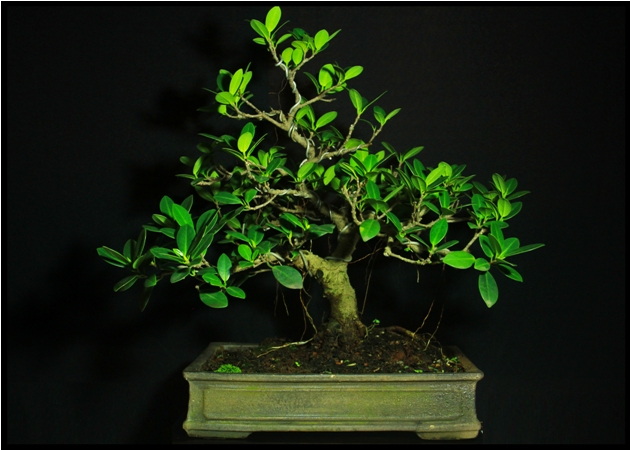Bonsai are grown in small and mostly flat pots which contain a limited amount of soil. Like all living things they need the three elements of water, oxygen and sunlight. This means that they have to be kept mostly outdoors (they can be brought indoors for display for a brief period only) their growing medium or soil should be so suited as to provide anchorage, nourishment and good drainage and they have to be provided regularly with water in order to survive. The actual process of watering bonsai essentially involves the use of a watering can with a fine rose or a pipe hose fitted with a sprinkler attachment with which water is sprinkled on the bonsai in such a way that dust is washed off the foliage and the entire soil is also drenched thoroughly so that eventually excess water flows out of the drainage holes. Most of the books on bonsai and the internet information emanating from Japan and the western countries where the climate is cold and temperate speak of a watering practice which is apparently quite complex. The reason, in the first place, seems to be that due to the cold climate evaporation of moisture from the soil in a bonsai pot would be at a much slower rate than in the tropics where the climate is much more hot. Secondly, coniferous species which are a mainstay of bonsai in colder regions, appear to prefer a state of semi-dryness between consecutive watering, for which reason a specific or fixed frequency of watering cannot be prescribed for them. As there is a major temperature difference in the climatic conditions of temperate and tropical regions as also in the species of plants used for bonsai, watering bonsai in the tropics or watering tropical bonsai in ambient conditions is a different but much simpler prospect. The aquatic needs of tropical region bonsai is much greater than the needs of bonsai from the temperate regions. The guiding principle of watering bonsai in a temperate region on a need-based schedule therefore does not apply to tropical bonsai where, even in winter they need to be watered daily. In the hot tropical summer where the mercury often crosses the 40 degree celsius mark, bonsai need to be watered at least twice daily. In fact, just as bonsai in the temperate regions sometimes need winter protection during freezing amp; frosty temperatures, so also some species with delicate foliage need to be given protection from extreme sunlight in the tropics. Most tropical broad-leaf evergreen species especially ficus and other tropical species thrive on the combination of sunlight, moisture and humidity. This being the case, although a state of semi-dryness between waterings is sometimes tolerated, it is not appreciated. Out and out bone dryness is of course not tolerated in any climate, whether temperate or tropical. Tropical plants also grow much faster than temperate region plants probably because they have three growing seasons per year- the spring, the tropical rainy season and the brief period of heat prior to the onset of winter – as compared to only the spring growing cycle in the temperate regions. Therefore the watering needs of tropical plants in tropical weather is comparatively higher especially during the three growing periods adequate watering in summer. Most species, therefore, need watering twice daily in the summer months in the tropics. Even in the rainy season, a look-out has to be kept on the rainfall and on days when the rains are scanty, watering has to be done manually. Especially, bonsai with a dense canopy of leaves have to be checked regularly to see that they are watered manually if necessary on days when the rains are not adequate enough. To conclude therefore, care has to be taken to water tropical bonsai on a daily basis throughout the year and twice daily during summere considering the high temperatures and the special need of the broad-leaf evergreens predominant in the tropical bonsai circle.

